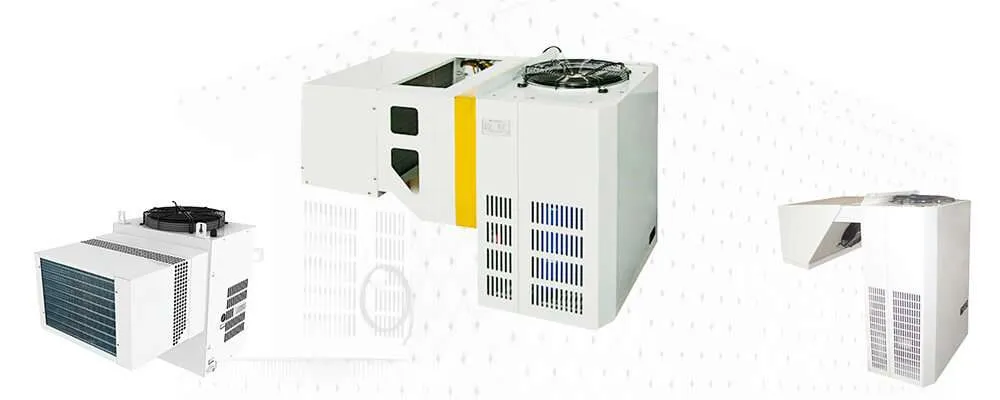In today’s technologically advanced era, various sectors, industries, and even our lifestyles have adapted well and evolved over time. Innovations, developments, and technological advancements shape our present and future, shaping our day-to-day lives for the better. One such area where technological advances have significantly impacted is the design and functioning of refrigeration systems. Speaking of innovations in refrigeration, monoblock refrigeration systems have made a considerable mark.
Understanding Monoblock Refrigeration System
Demystifying Refrigeration: To understand and appreciate monoblock refrigeration systems, it’s essential first to grasp what refrigeration truly is. Simply put, refrigeration involves removing heat from a substance or space, reducing its temperature and maintaining that lower temperature.
Whether it is preserving your favorite ice cream in the freezer, storing critical samples in a laboratory, or holding vast quantities of food in vast commercial cold rooms, refrigeration is an integral part of modern human civilization.
Now, imagine being able to elevate this experience with a simplified, comprehensive, and all-in-one refrigeration system, and you get the Monoblock Refrigeration System. Let’s delve into what it really is.
‘Monoblock,’ as a term, combines ‘Mono’ meaning single and ‘block’ referring to an assemblage. Thus, a monoblock refrigeration system is a compact and self-contained machine, integrating all essential components of a refrigeration system—namely, the evaporator, compressor, and condenser—into a single functional entity. This compact design is meant for wall or roof mounting, usually placed outside the structure of a cold storage room or a refrigerated chamber.
Anatomy of a Monoblock Refrigeration System
The monoblock refrigeration system’s simplicity is defined by its streamlined form, consisting of three primary components:
Evaporator: The evaporator soaks in the heat from inside the refrigeration unit. Historically, evaporators have been used to create localized cooler environments. Here, as the refrigerant absorbs the heat, it evaporates, cooling the interiors of the refrigerator.
Condenser: Warm, vaporized refrigerant from the evaporator enters the condenser. Acting as a heat exchanger, the condenser dumps the inward heat to the outer environment causing the refrigerant to condense.
Compressor: Linked with both the evaporator and the condenser, the compressor’s role does not conclude at just compressing the refrigerant. By pressurizing the refrigerant and mobilizing it around the system, the compressor ensures that the refrigerant keeps traversing from the evaporator to the condenser and back.
These three core parts are assembled thoughtfully into a monoblock structure leading to proficient heat isolation outside the refrigeration unit, hence ensuring the room inside remains uniformly cool.
Why Consider a Monoblock Refrigeration System?
The monoblock refrigeration system demonstrates a perfect blend of efficiency, convenience, and innovation. Here’s why it is worth considering:
Installation is a breeze: The monoblock system simplifies the installation process with its unified structure. All you need is a hole in the wall or ceiling of the cold room to be equipped with the system. This eliminates the necessity for specialized techniques or experts for its installation.
Maintenance becomes effortless: The upkeep of the monoblock refrigeration system is more straightforward than traditional systems. As a monolithic structure, if an issue crops up, the technician can conveniently replace the entire unit as compared to repairing multiple discrete components. Thus, operational downtime is considerably reduced.
Energy efficiency: The monoblock system’s energy efficiency is higher as all the components are contained within a single unit. The proximity between these parts helps minimize energy loss that could occur due to extended refrigerant pathways in conventional refrigeration systems.
Space-saving solution: The monoblock system’s integrated design frees up a considerable amount of internal space that otherwise would’ve been occupied by the three separate components.
Monoblock Refrigeration: Many Applications
The monoblock refrigeration system serves an array of applications cutting across various industry types. From domestic use to commercial and industrial applications, these systems come in handy wherever there’s the need for an efficient, reliable, and space-saving cooling solution.
This flexibility makes them ideal for use in cold rooms, refrigerated cabinets, wine cellars, in medical facilities for storage of vaccines and medication, in the food industry such as storing fruits, vegetables, meat, among others.
Monoblock Refrigeration: The Future of Cooling Systems
Monoblock refrigeration systems, with their capability of efficiently managing heat and temperature, positively herald a new wave of advanced, uniform cooling. They provide an economic, energy-efficient, and easy-to-install solution that can serve multiple industries. It embodies not just refrigeration of the future but also an ideal way forward for improving energy consumption patterns and making more efficient use of space.
Innovations like the monoblock refrigeration system lay testament to humanity’s advancements in technology. As the world embraces sustainable cooling and refrigeration solutions, monoblock systems have carved a niche for themselves and are poised for sustained growth, creating new standards for cooling system designs.

